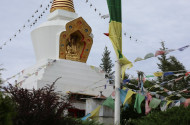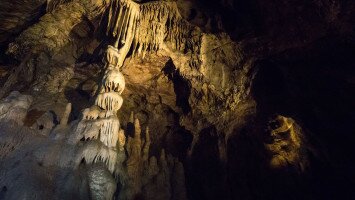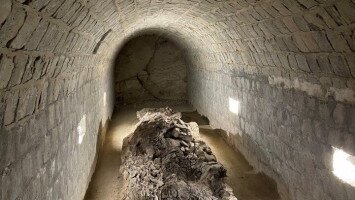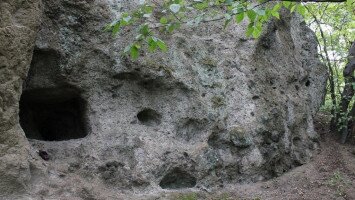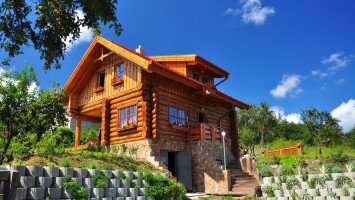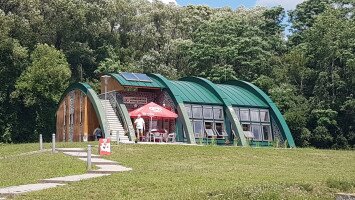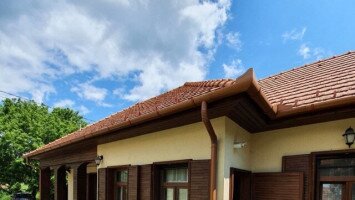At the bottom of the Mátra, on a slope overlooking the wide valley of the river Zagyva, right next to road 21, on the outskirts of the village of Tar, we find the Kőrösi Csoma Sándor Memorial Park and the Peace Stupa erected here.
Design, features
The stupa is an important symbol of Buddhism, a conical sacral edifice and sacred place symbolizing enlightenment. There are many of them in the Buddhist countries of Asia, but this is not the only one in Hungary. The way it was created was determined by the Buddha himself about 2,500 years ago. The stupa was built to counteract the external and internal destructive forces operating in the world. It's external, stepped form represents a gradual path to spiritual development, to enlightenment. Inside are sacred relics, symbols, and writings from enlightened beings. The Tari stupa was built to create and consolidate happiness and prosperity. It was consecrated by the 14th Dalai Lama on July 22nd, 1992, in the presence of invited representatives of the Hungarian churches and the Republic of Hungary. The Hungarian bodhisattva (Buddhist saint) was made on the occasion of the 150th anniversary of the death of Sándor Kőrösi Csoma. The shrine was built in four months under the inspiration and spiritual guidance of the Venerable Dorje Lopön Lama Ngawang, from the generous donations of various churches, the Republic of Hungary, individuals and companies, with the selfless help of many enthusiastic, peace-loving people, regardless of racial, religious or religious differences.
The axis of the stupa is the tree of life in which sacred relics have been placed. The "mani-korlo" (prayer mill) rotates in the stupa day and night without stopping. It contains a ton of rolls of paper containing a scripture containing the essence of the Buddha’s doctrine, containing four hundred million mantras. When the Buddha taught, it is said, he spun the wheel of doctrine that still rotates today. When viewing, it is advisable to go around the stupa from both outside and inside, in the same direction as the rotation of the prayer cylinder. In the meantime, if we formulate good wishes and good intentions, they become inseparable from the infinite goodness that pervades everything through the blessing of the stupa.
The traditional practice associated with stupas is offering: lighting a candle, incense, donating money, etc., which may be accompanied by personal or general wishes. There is a shop in the area with a very rich range of goods, the India Shop, where you can find exercise supplies (dorje, bell, malt, serving utensils, relic holders, puddle book holder made of colored brocade, candle holders, incense holders, musical instruments, etc.). All proceeds from donations and sales will be used to maintain and improve the operation of the stupa and the education and meditation center.
The stupa can be visited by anyone, regardless of faith or religious affiliation, in accordance with the basic rules of conduct that are customary in sanctified places anyway (e.g., smoking is not allowed). The permanent exhibition presenting the life of Sándor Kőrösi Csoma has been housed in a typical building next to the stupa. The India Shop also offers soft drinks and coffee, as well as lots of souvenirs from India, Nepal, Japan, China, South America and Southeast Asia. If we visit here, we are guaranteed to be able to return home filled with rich experiences, and we will certainly want to return.
The venue can be viewed free of charge every day for various occasional events and joint meditations.
Official website: www.buddha-tar.hu |

